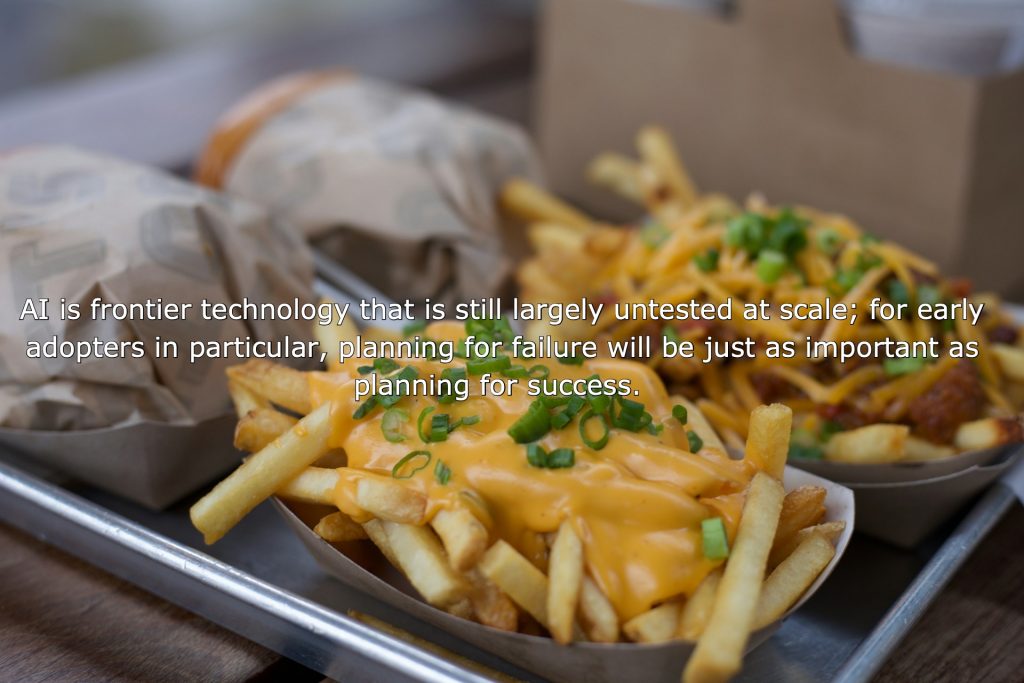Would You Like AI With That? Putting Artificial Intelligence to Work in the Fast Food Industry | Modern Restaurant Management | The Business of Eating & Restaurant Management News
作者:Modern Restaurant Management 2025 (https://modernrestaurantmanagement.com)
Forget data centers and distant research labs: your local quick service restaurant may soon be the frontline of AI adoption in the real world.
McDonald’s has plans for a significant AI overhaul while Yum! Brands – parent of KFC, Taco Bell and Pizza Hut – is partnering with Nvidia to accelerate the development of AI technologies for its restaurants. Chick-fil-A already uses smart cameras and drone footage to optimize speed and accuracy at its drive-through sites.
It’s no surprise that the fast food chains, which have over 100,000 outlets between them, see opportunities for AI efficiencies. For starters, their plans include using AI agents to run repetitive admin; applying voice-automated AI to drive-through and back-office operations; implementing computer vision to speed up meal delivery; and sensor-tagging hard-working kitchen kit to predict maintenance needs.
That all sounds like good news for time-pressed consumers and stressed-out kitchen and counter staff. As Brian Rice, chief information officer at McDonald’s, told The Wall Street Journal: “We have customers at the counter, we have customers at our drive-through, couriers coming in for delivery, delivery at curbside. That’s a lot to deal with for our crew.”
The priority for the restaurant groups is to ensure the AI implementations alleviate, rather than aggravate, the stress. AI is frontier technology that is still largely untested at scale; for early adopters in particular, planning for failure will be just as important as planning for success.
Security on the Menu
A key challenge for fast food outlets is that there are multiple interfaces with customers, from the counter and screens in-store to drive-through terminals, in-app ordering, and third-party ordering and delivery services. Introducing any new technology at any of those interfaces is a serious undertaking that brings integration and security challenges.
With AI systems, the risks are magnified: the possible angles of attack are still emerging and infosec professionals don’t have the tools or knowledge to defend against every threat. As AI is connected, via agents, to both virtual and physical entities – from inhouse HR systems to drive-through terminals – the permutations for potential vulnerabilities explode in volume.
It’s easy to see the appeal of an AI ‘manager’ that can take over tasks like staff rostering and holiday allocations. However, an AI agent that draws up rosters will need access to staff data, holiday calendars, and other info, opening up new security gaps for both accidental and malicious threats.
If an AI manager does perform well in initial use cases such as rostering, there will naturally be a temptation to expand its use to other areas. However, moving responsibility from one manager to another (human to digital, in this case) can naturally open up gaps in processes and lead to new threats.
For instance, an AI manager could be instructed to automatically change door security codes every 30 days but that simple shift could have serious consequences if it is not properly communicated to staff, e.g. in the event of a fire. Continuous, wide-ranging testing is crucial to find the unintended consequences and corner cases in every AI-powered implementation.
Vulnerabilities in Voice and Vision
With voice-automated ordering, there are known threats such as bad actors targeting systems with sub-human-level sound, which can be heard digitally but not by humans. Imagine the impact of a ‘silent’ but repetitive digital order for 500 meals, multiplied across thousands of restaurants.
Voice systems can also be affected by environmental factors such as ambient noise from traffic, passing footfall or even piped music. In some locations, two or more drive-throughs may be located side by side, raising the possibility of an AI system picking up the wrong voice, causing food waste and financial loss.
These environmental factors vary from location to location, so a one-size-fits-all approach is not going to work. Environmental factors also change – new infrastructure is built and neighbouring retailers come and go – so the performance of an AI system will rely on it being trained and tested on an ongoing basis.
Computer vision systems also come with security and privacy concerns: can a system count cars in a drive-through queue (for efficient forward-planning) without ‘seeing’ the people inside? Can computer vision in fast food kitchens – where there is a proliferation of reflective surfaces – check meal orders but avoid seeing staff and customers?
The fact that most fast food chains operate a franchise model adds a layer of complication to network-wide IT roll-outs. Some franchisees will have more robust technical – and infosec – abilities than others, but the fallout from any security failure will hit the group as a whole.
The Speed/Safety Showdown
AI systems use significant computing power so each location implementing new applications will have to be suitably equipped, with robust back-up plans in case the new systems fail or are breached. By publicly declaring their AI intentions, businesses may actually put themselves on the map for threat actors with an interest in testing this new technology.
It’s clear that enterprises must be certain their AI systems are subject to rigorous testing, both pre-launch and on an ongoing basis. However, testing of AI models with simulated real-world threats – known as red-teaming – is still largely human-centric, even at the biggest AI companies.
That’s an issue because manual red-teaming exercises can span weeks or even months, resulting in a stale and incomplete understanding of current risks. In a world where each AI system – and the agents within it – can be uniquely equipped and tasked, even a highly-skilled specialist with lots of existing software tools can never hope to keep up.
Threat actors can afford to invest time in probing widely and deeply for weaknesses, but time equals money for enterprises. Their sweet spot is to find the most effective security solution by red-teaming in the quickest time possible, in order to establish an effective perimeter around their AI systems.
Recognizing the Risks
The big chains appear to understand the risks. Yum! Brands, which has over 61,000 locations worldwide, is starting with a pilot program in 500 restaurants. Its 2024 annual report notes that “the rapid evolution and increased adoption of Al and other emerging technologies also may heighten our cybersecurity risks by making cyber attacks and social engineering more difficult to detect, contain and mitigate”.
Meanwhile, in its corporate filings, McDonald’s notes that “the artificial intelligence tools we are incorporating into certain aspects of our business may not generate the intended efficiencies and may impact our business results”. Alongside traditional cyber threats, its long list of potential IT risks now includes “deepfakes and other malicious uses of artificial intelligence”.
The message is clear: AI can certainly enable efficiencies for restaurants but only if security is given proper attention. In the rush to deploy new systems, understanding this relationship between their performance, cost, and security has never been more critical.

James White
James White is President and CTO of CalypsoAI, a leader in AI security. CalyspoAI’s Inference Red-Team tool, using Agentic Warfare capability, has successfully found flaws in all the world's leading AI models, ranked on the CalypsoAI Security Leaderboard.
关于《Would You Like AI With That? Putting Artificial Intelligence to Work in the Fast Food Industry | Modern Restaurant Management | The Business of Eating & Restaurant Management News》的评论
暂无评论
